“Stop. You’re ruining this for me!”
Jordan Gray is excited as she unpacks her Team USA kit ahead of the 26th edition of the Thorpe Cup, the annual combined events competition between Germany and the USA. It’s Jordan’s first time representing the United States, and her first competition outwith North America.
“It was something I had on my radar since the beginning of the year. I’m excited for the opportunity. And super excited to get my gear. I have a teammate who’s been on the US team multiple times, and he said “uh, it’s nothing new “. So I told him “Stop. You’re ruining this for me!”
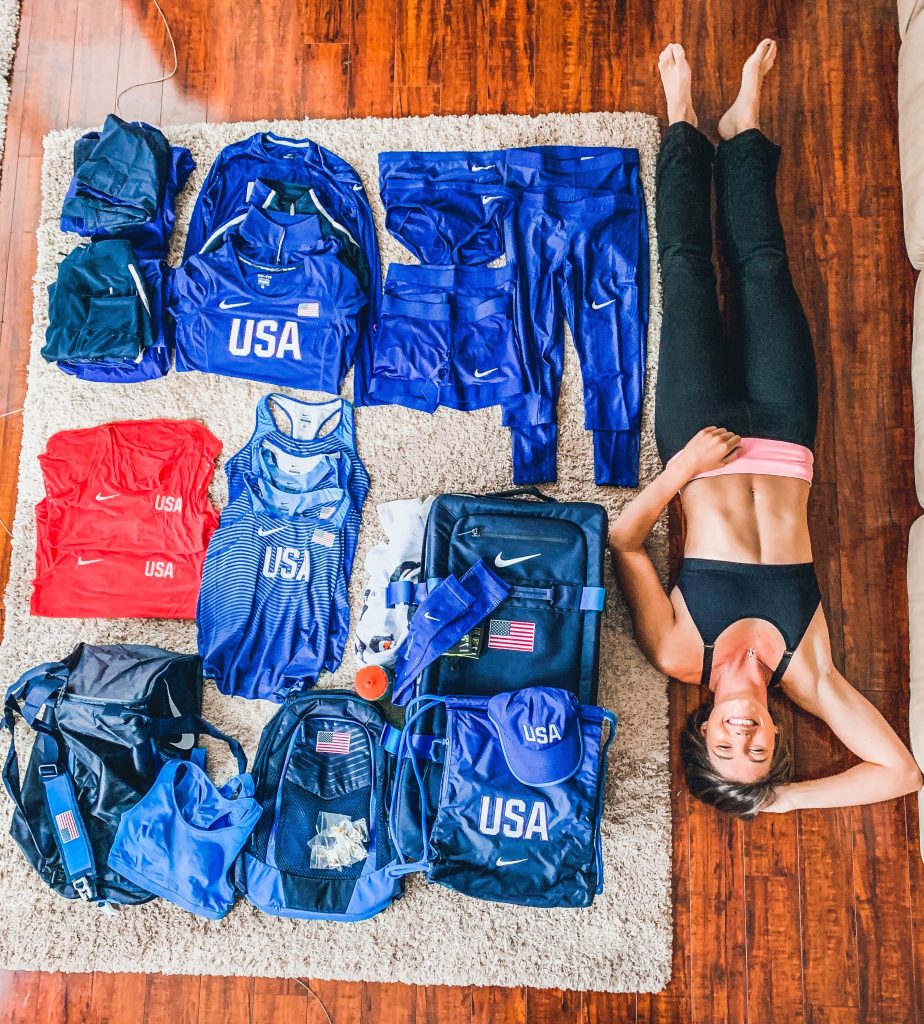
Jordan got the call up for the Thorpe Cup in Bernhausen, Germany following her top ten performance in the US Championships heptathlon with a PB of 5903 points in July, and her seventh place in the NCAAs with 5846 in June. While the top three from the US Champs Erica Bougard, Kendell Williams, Chari Hawkins and IAAF Combined Events Challenge leader Annie Kunz packed their bags for Doha, Jordan joined captain Lindsay Schwartz, Kendall Gustafson, Hope Bender, Alissa Brooks-Johnson, Michelle Atherley and Emilyn Dearman in the US Thorpe Cup heptathlon team.
“It’s a really cool change. Usually at NCAAs and USAs a bunch of us are competing against each other. It’s away from “my team” versus “your team”. I know you, we’ve hung out, we’ve talked, now we get to compete together and cheer for each other.
Jordan’s debut at the Thorpe Cup didn’t quite go to plan. In the opening event, she struck the final hurdle, and stumbled into the adjacent lane. She corrected herself but finished in 14.57, well short of her 13.80 season’s best from the US Championships.
What followed in the next two events of the competition was something of a metaphor for the character of Jordan Gray. Dedicated. Determined. After the hurdles, with her hamstring injured, Jordan took a safety high jump at 1.32 (her PB is 1.73) to log points for the team. She made it over that height and no further. But the shot was a different matter – one of Jordan’s best events. Hopping on one leg and bandaged up to the eyeballs she banged out 13.66, much closer to her usual 13-14m standard. But the 200 was an event too far and she had to call an end to the competition. The US women went onto win the overall heptathlon competition, alongside the German men in the decathlon. Jordan joined in her teammates’ celebration, but the moment was bittersweet.
“I hate having to drop out. It kills me.
So after the meet was over, I got a little alone time, got some sugar, had a little cry, a little Jesus time. But now it’s in the past.”

It’s not the first time Jordan has been determined to grin and bear it to make it to the finish line. She grew up on a small farm in Georgia with chickens and a goat, and doing a range of sports including gymnastics, taekwando, tennis, softball and basketball. But not track and field. Her first exposure to track and field was in her senior year of high school.
“I came into my senior year with a sprained ankle. I’d pulled a piece of bone off in a basketball competition right before I was supposed to start track practice. So they taught me shot put and javelin. When I got out of the boot, they said “Oh you can run and jump, so you’re going to be a heptathlete! ”
And the heptathlon was new concept for Jordan. “I didn’t know what that was. I didn’t know how far that was around the track. I didn’t know what these events were. But I just did what they told me. I thought everyone just did everything. “
“So my first ever track meet was the heptathlon. I crashed into the hurdles on hurdle five. I got up and finished. I literally got two points for the hurdles, and I was 0.3 seconds away from getting no points at all. I recently got over 1000 points on my hurdle time and I texted my high school coach and said “I’ve improved a thousand points since I started! Just so you know…”
Jordan credits her mother, Jackie, with the introduction proper to track and field. It’s hard to believe that Jordan was ever a reluctant athlete, but even as she made the transition from high school to college, she was still hankering after basketball.
“I called my mom and said, “I hate track and field, it’s the worst event, I want to quit”. And she replied “Well if you quit, you have to go get a job. So you can think about this as a job that keeps you in shape.”
“Well played, mom””.
Jordan chose to stay in Georgia to pursue her college career, at Kennesaw State. She found the right partnership with Andy Eggerth, a great fit not only for the pursuit of combined events, but also someone who also shared Jordan’s Christian values, an integral part of Jordan’s approach to life and to her sport. She continued to improve during her freshman year.

But then, something caught her eye. The decathlon.
It started with pole vault. She pestered Andy to let her learn the new discipline, and when he didn’t jump on board straight away, he was subjected to the full force of the Jordan Gray experience.
“I’m learning pole vault.”
“No, you’re not. I’m not teaching you pole vault.”
“Yes, you are, I’m doing pole vault”.
Jordan recounts the story, “I kept bugging him, and kept bugging him. And then one day, there was a super hard practice and I was about to go home. Andy came over and told me that the decathletes had pole vault today. He asked whether I wanted to come try it. I was so tired, but I knew that if I declined, he would never ask again. So I went. And from that point on, I started pole vaulting.”
And then it was discus. There was the possibility that Jordan might be asked to compete at a conference championship to secure points, and so Andy taught Jordan to throw discus.
And then, it was decathlon.
“I’m going to do the decathlon. This is my new goal.”
“You’re not doing a decathlon”
“That’s what you said about pole vault. I’m doing a decathlon.”
In a surprise to no-one, Jordan wore Andy down. But from that point forward, they were invested in the same goal and their partnership developed into something formidable . They worked together for several years, and in June this year, Jordan finally got the chance to do a full decathlon.
The event took place at the College of San Mateo in the San Francisco Bay Area on 22-23 June, organised by the Women’s Decathlon Association. The Association was founded this year by Becca Gillespy-Peter and Dimitriy Yakoushkin, with the aim of promoting opportunities for athletes to compete in decathlon, and to work with governing bodies to include the event in major competitions.
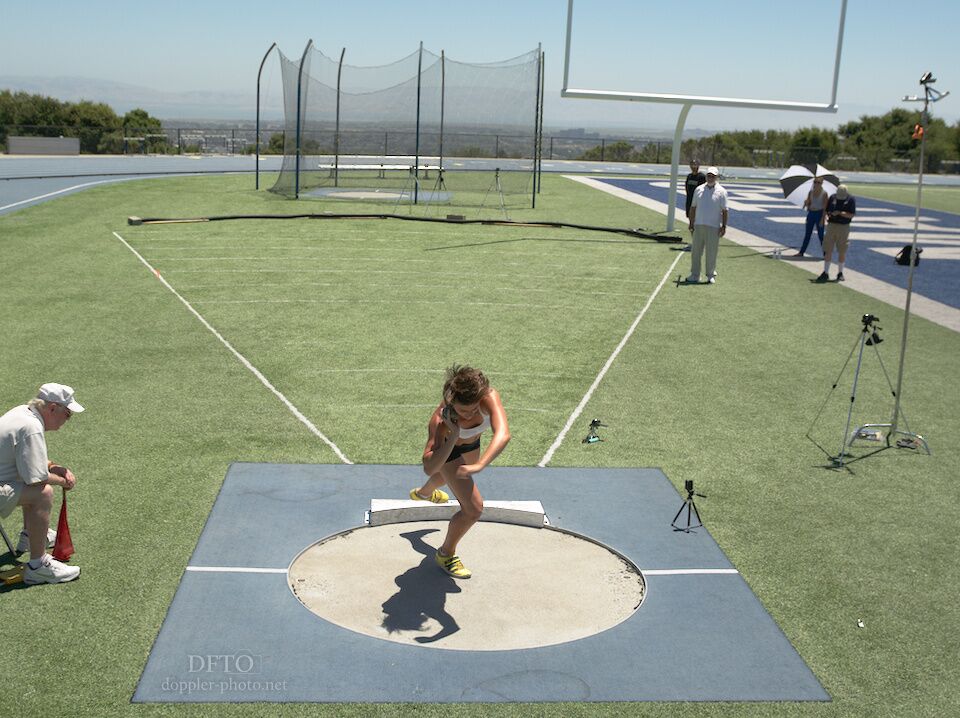
Jordan’s target was the US decathlon record of 7577, belonging to Tiffany Lott-Hogan and set in 2000.
Jordan didn’t just do a decathlon. In the same way that she seems to burst through every barrier placed in her path, she pulverised the American record, adding almost 400 points to score a total of 7921.
Her series was 12.16, 6.18, 12.86, 1.65, 57.41,14.10, 39.09, 3.71, 39.83, 5:26.14.
That included four individual PBs and took her to the number three position of all time, behind world record holder and two-time Olympic heptathlon medallist Austra Skujyte (8358 in 2005), and Marie Collonville (8150 in Talence in 2004)
“I cried I was so happy that I got to do that decathlon. I was hugging Becca and telling her that my dream came true. And it was an amazing experience.”
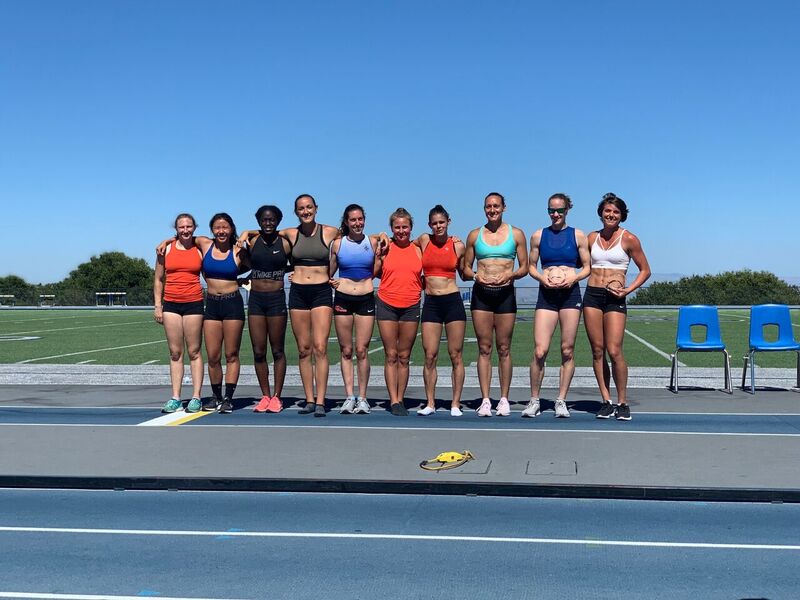
And that’s where we can add another descriptor to Jordan. Determined. Dedicated. Decathlete. Jordan’s training partners while based in Georgia are decathletes, Solomon Simmons and Mike Morgan. Solomon in particular has had a huge year. Second in the US Championships in a PB and World Championships qualifying score of 8227, and a superb 8th in the decathlon in Doha in October.
“Solomon gets to go to Worlds. That’s awesome and I’m super happy for him.”
“But everything Solomon does, I do. I practice with him, I do all his workouts, I do all the exact same stuff as him. It’s the event I train for. It’s the event I love. I broke the American record. “
“But I don’t get to go to Worlds. I don’t get to go to the Olympics.
Because I’m a girl.”
Jordan Gray is a girl and a decathlete. She competes mostly at heptathlon, and indoor pentathlon, since those are the only options normally available to her. But first and foremost, she is a decathlete. That’s something quite different, as she explains:
“Being a heptathlete versus a decathlete is entirely different. I’m a different kind of athlete. I am not a naturally fast person. A lot of heptathletes are fast, powerful people. We’ll teach you how to throw, and if you’re a fast, powerful athlete who’s willing to put in the work, you’ll become a good heptathlete. “
But that’s not Jordan’s strong suit. “I’m not a fast person,” she emphasises, “I’m really not. I can jump. And I can throw and I’m willing to put in all the time and effort to do pole vault and the thousands of throws of discus. You can kind of get away with chucking a javelin or shot put. But you can’t just chuck a discus. You just can’t. “
And there are some hard choices involved. “I could be a much better heptathlete if I did more speed days, more high jump. If I wasn’t taking a day to pole vault, and I wasn’t taking a day to do 400 training instead of 200 training. “
“I could be a way better heptathlete, but that’s not what I’m concerned with. That’s not what I want to do.”
For those less familiar with combined events, women have the opportunity to compete in the heptathlon at major events, while men compete in the decathlon. Indoors, women compete in the pentathlon, while the men contest the heptathlon (a different* set of seven events from the women’s outdoor heptathlon).
It’s important to recognise that the decathlon is not just the heptathlon with three events added. Over and above the different sprint and middle-distance disciplines, both of which require specific approaches to training, there are two additional, highly technical events, the discus and the pole vault. The best male decathletes are not necessarily the best heptathletes when they compete indoors. And so the best female heptathletes would not necessarily be the best female decathletes, if they chose to turn their efforts to that discipline.
Jordan’s analysis of the different requirements of the two events goes to the heart of a common assumption about decathlon for women, that participation would be drawn from the current pool of heptathletes.
“I don’t think there would be a ton of heptathletes that did decathlon. It would be a whole bunch of people coming through as decathletes. There are a lot of heptathletes who don’t necessarily want to change to decathlon because it’s a completely different type of thing. You have to learn new things; you have to learn new strategies. It’s a different game. Decathlon is the full version of the game. Let’s be allowed to play it.”

There is a growing number of women who wish to compete in the decathlon. Like any sportsperson, the ultimate aim of those athletes is to represent their country at the highest level, at World and Olympic championships. And as with any new discipline, there’s an acknowledgement that there will be a number of interim steps to lay the groundwork, improve standards, develop competition, and iron out the wrinkles before an event appears on the global championships calendar.
There are a number of challenges facing women who want to pursue a career in the decathlon. Some of those challenges are practical, but none of them are insurmountable, especially if a fresh eye and open mind is applied to setup and planning.
“One of the arguments is that you can’t run two decathlons at the same time”, explains Jordan. “When I did the one in June, they ran a guys’ and a girls’ decathlon at the same time. We did it, and it worked. The hard one is pole vault, where you would have to start it at least an hour and half, two hours earlier. But If you did that, you would be perfectly fine. And many events like the NCAAs are over four days, so they run the decathlon on one day and the heptathlon on another. So if you can do that for decathlon and heptathlon, just run the two decathlons on two different days.”
Even with some additional scheduling considerations to figure out, these hardly seem good reason to dismiss the idea of a decathlon for women. But even a cursory examination of the debate on the issue, particularly on social media, reveals a number of arguments which sail perilously close to implying that women should have no place exploring new opportunities and breaking new ground. That their responsibility is to stay with the women-only event to ensure its legacy. Some arguments also imply that women proposing to do the decathlon present an inconvenience, and often the few decathlons put on for women indeed reverse the order of a number of events, to avoid the inconvenience of trying to run a parallel decathlon to the men.
“It’s a little bit of a slap in the face to want to change the event order,” Jordan admits. “No-one wants to high jump as event nine.”
Many of the arguments presented against decathlon conflate practicality and principle. Time management challenges are hardly a good reason to deny women opportunity. And the development of a robust scoring system for a full suite of women’s combined events (including indoor heptathlon) is surely a dream project for many of the enthusiastic statisticians in our sport.
Some challenges are certainly more complex to work through. Would decathlon mean retiring the heptathlon from the programme? How long would it take a critical mass of women to follow Jordan down the path she is blazing towards 8000 points? While the current focus of women’s combined eventing remains on the seven-event version, that’s a tricky one to consider. In a schedule where every event has to fight for coverage, it’s a bold decision to further extend the choice of events.
But none of these arguments are sufficient to deny women the opportunity to compete for the same accolade as their male counterparts – the title of the world’s greatest all-round athlete.
“I think there should be a period of time where they offer both,” Jordan says. “Or say in this many years it’s going to change to the decathlon. That way it’s not blindsiding a bunch of women who don’t pole vault or do the discus. They can decide if they want to continue and do the decathlon. But, again, it’s a different type of athlete. It’s not necessarily better or worse. It’s just a different game.”
The heptathlon has brought us outstanding athletes such as Jackie Joyner Kersee and Carolina Kluft. The current competition between Nafi Thiam and Katarina Johnson-Thompson is one of the most eagerly anticipated duels of next year’s Olympics. No-one is suggesting that those careers be truncated or compromised in any way.
But for those girls coming through high school and college, it is surely time to provide them with a pathway to enjoy the opportunity that has been available for decades to their male teammates. In 2019, are we still promoting structures which, by default, direct girls to the less demanding event, and permit only boys to progress to tackle the full ten disciplines – all ten of which have been contested by women at World and Olympic level for two decades?
But things are starting to change. Jordan relays examples where she and her contemporaries have encountered girls desperate to do a decathlon. “There was one girl who said ‘Oh my gosh you did a decathlon! Hopefully when I go to college, I can do a decathlon too.’ Just hearing that kind of stuff is super motivational. I seriously hope that change will come in my career. But even if it doesn’t, I hope that I can push it enough so that next generation has the opportunity to compete. There are a handful of women currently competing who might jump in, but I think it will be for those who are currently in college.”
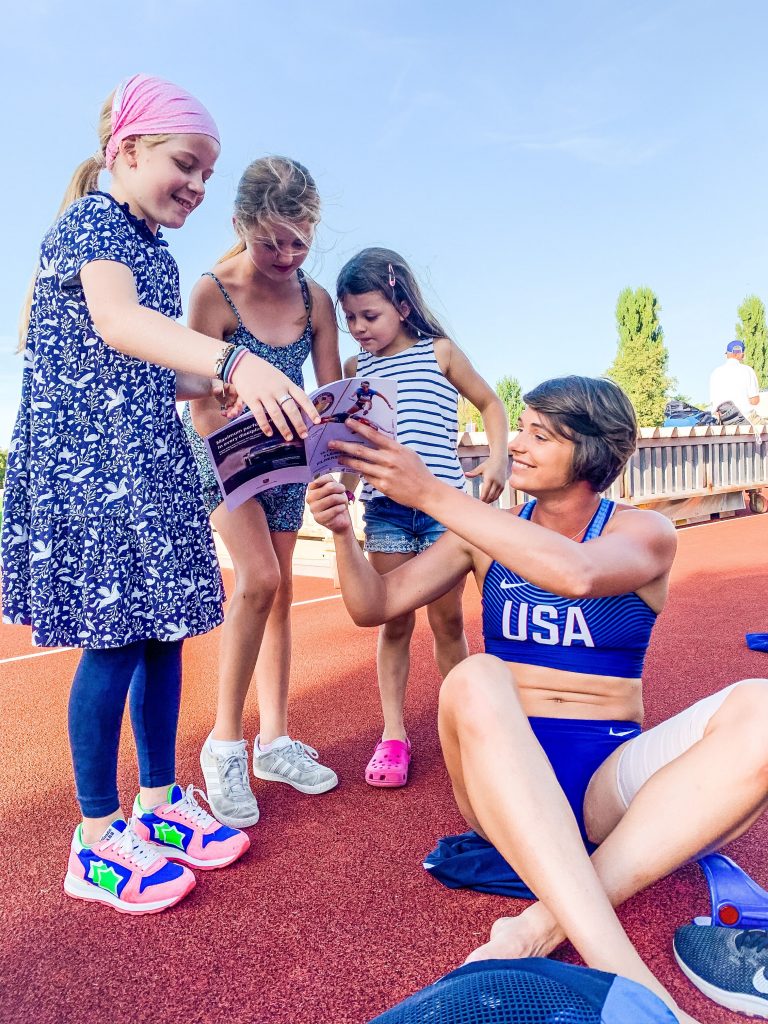
One of those athletes is 17-year old Belgian Cassandre Evans. She and her coach Vincent Delcros have been considering decathlon for some time, and Cassandre finally had the opportunity to compete in a decathlon in Brussels in late September. Her target was the nine-year old Belgian record of 6020. She beat it by over 500 points, scoring 6577.
“How inspiring it was to see the great performance in June by Jordan Gray!” says Cassandre. “I was expecting a lot from this first decathlon because I knew I was able to impact this discipline at my level and prove that women can do it too. I was a little bit uncomfortable with the order (the “women’s one”), but my preparation had focused on that point. With some decent performances and 2 PBs, the national record was mine during the high jump. So I was able to run my first 1500m without pressure, but with a great motivation to reach some world rankings targets discussed with my coach. With 6577 points, I scored the second best U20 performance of all time.”
“It was a great experience, ” Cassandre reflects. “There was a great atmosphere between the girls participating, and I’m already looking forward to doing another decathlon in 2020! With all my PBs, the ideal total is 7138pts. There is no U20 world record yet, and the IAAF expect 7300 before ratifying. Quite a big step but “dreams without goals are just dreams”. My ambition as a young decathlete is to promote the discipline and change minds, to finally make women’s decathlon an official event. Maybe we can keep the heptathlon, at least as a transition, but we have to install the decathlon now: it’s a more complete discipline, why should women accept competing only in less demanding combined events? In a decathlon, each athlete can find events to express her/his strengths, which is not possible in the heptathlon, way too oriented towards speed & “bounce”.”

“By competing in more decathlons, I hope to help prove that we are ready. Maybe I can also give some inspiration to younger girls and, together, make our dreams come true. I’ll show the world that some women are waiting for change, and I’m ready to engage the public on this battle. We can do it too. “
“Decathlon is for everybody!”
Cassandre Evans, Belgian decathlon record holder
As both Cassandre and Jordan demonstrate, decathlon can be for everybody. And we are in a period of innovation in athletics. In the last few years we have had Nitro Athletics, Dynamic New Athletics (DNA), City Games and The Match. The field events have been a testing ground for new rules and formats in jumps and throws. We’ve had mixed discus, and mixed relays. There are shuttle hurdle relays. Medley relays. Javelin throwers aiming at targets on the ground. We’ve had Devil Take the Hindmost. Pole vault in the streets, shot put in railway stations and high jump in shopping centres. We’ve had Breaking 2 and the 1:59 Challenge exhibition races.
Some of these initiatives have brought fun and inspiration to athletics and have been welcomed by athletes and fans alike. Others have rightly been consigned to the rubbish bin after swift and brutal feedback. But what’s clear is that rules can be changed, and formats can be adjusted, if there is a will to do so.
Is the idea of a women’s decathlon to match the men’s event really so radical that schedules can’t be adjusted, rules can’t be reformed, or even simply exhibition events staged? Is our sport in such good shape that we can afford to ignore a new generation of motivated, talented athletes who want to explore new opportunities?
Jordan is quite happy to consider more radical measures. And she has a particular role model in mind. In 1967, Kathrine Switzer took part in the Boston marathon, despite attempts by officials to bundle her off the route. Switzer’s hammer-throwing boyfriend made short work of those trying to remove her, and women were finally allowed to compete in the event until 1972.
“My score would have gotten me in with the guys at US Championships!” Jordan smiles. “I had Solomon and other friends competing in the decathlon. I seriously thought about being like that woman marathoner. These giant men, I told them ‘Y’all gonna keep people from dragging me off the track! None of these officials will be able to stop me! “ That was something I seriously considered. One day I’m go run the 42-inch hurdles just to make a point, in front of thousands of people. I’m going to get kicked out.”
She is smiling as she describes what might have been in Des Moines. But she’s not joking.
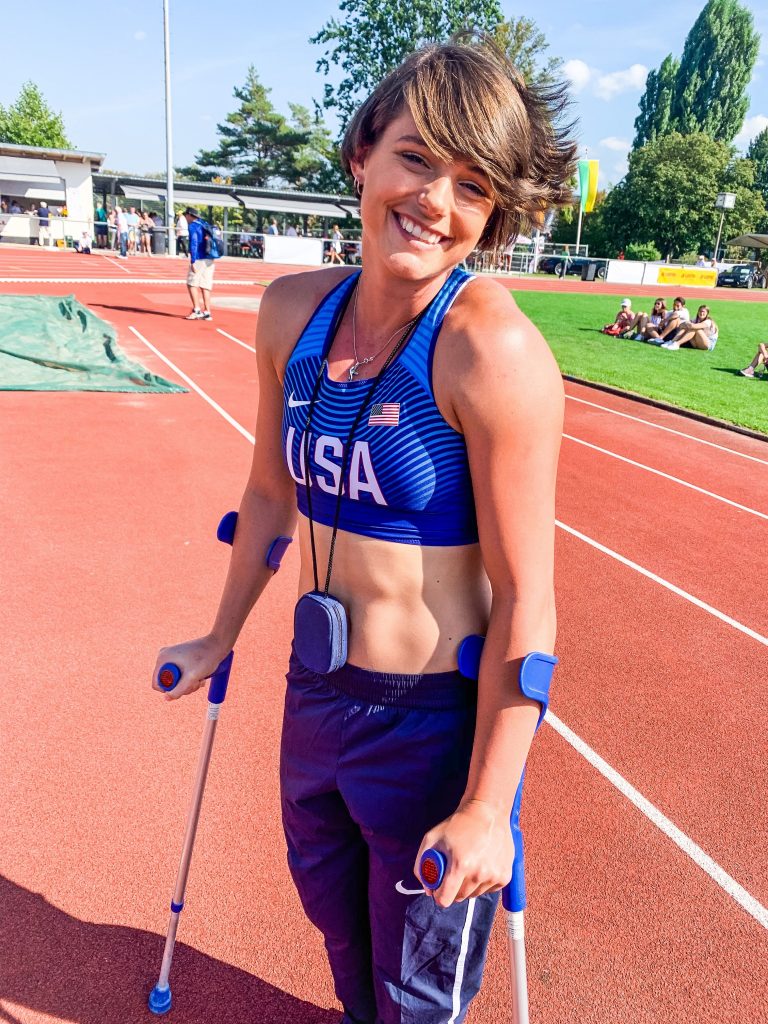
Team USA teammate Solomon Simmons is right behind Jordan in her mission. “Jordan has always been someone who models ‘tenacity'”, he confirms. “Tell that woman she can’t do something and she’ll make it a grudge to show you how she can execute on it. Jordan’s an unbelievably hard worker who, like many multi-event women, wasn’t satisfied with the heptathlon. So she set her sights on being able to complete in the equal event, the decathlon.”
“She trains as a decathlete, excels every day as a decathlete, and wholly wants her fair opportunity to BE a decathlete, but isn’t offered that. The way I look at it, move out the way and give women like her a fair opportunity in the decathlon. Or else you’ll realize you are fighting against equality”
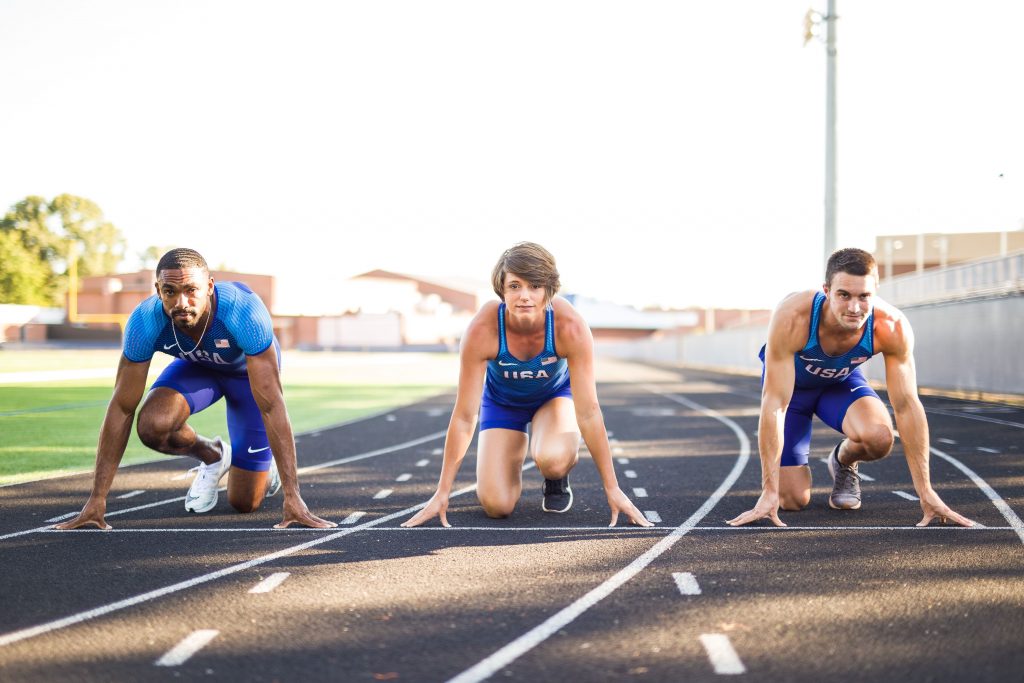
It can seem very strange to the public that there is such asymmetry in the combined events, and Jordan shares numerous examples of supporters in her family, in her church and among her friends who don’t understand why being a girl precludes her from being able to compete in the equivalent event to her male teammates. And, over and above the voices of her fellow aspiring female decathletes, she sees the public as the likely source of levers for change.
“Changes can happen if you want them to happen. People whom I barely know ask me ‘Who do I have to write to about that, because that makes me furious!’, that I can’t go to the Olympics because I’m a girl. People think the idea that women couldn’t do a marathon is crazy now. And every time the public goes crazy over something…change happens.”
Training for the combined events is exhausting enough, without also being the voice for change. Luckily, the dedication and determination to break new ground is something that comes naturally to Jordan and is inspired by her father Jeff.
“There was always competition in our household. Even when we were little, my dad would say “I’m going to throw these grapes as far as I can across the room, and you can catch them in your mouth”. We got a bat in our hands from the time that we could hold one. He’s also very big on character. When I wanted to do the decathlon, he said “Yes, you do it. You do it all. Make it work”. If things are ever discouraging, usually my dad’s the one that says “You’re fine. Keep pushing. You’re gonna make it”.
But like all dads, Jordan describes him as equal parts inspiration, equal part Embarrassing Dad.
“He always says that we have to “snot bubble” things, which means you should be trying so hard that you have physical snot bubbles coming out of your mouth or your nose. Even when I’m running the 800, he’ll be near the finish line screaming “SNOT BUBBLES!” super loud. And in high school it was kind of embarrassing. But now I love it. It’s just Dad cheering. He was always about grit and toughness, and he even built an acronym around it. G-R-I-T.
- You have to be grateful.
- You have to be respectful.
- You have to have integrity.
- And you have to have tenacity.”
And so “Grit Goddess” is Jordan’s social media nickname. A serious bucketful of grit is needed to get through all ten events over two days. So, did Jordan’s grit come in useful when taking on the 1500?
“All the decathletes told me ‘You’re going to hate it. It’s the worst event. It’s the most terrible thing. You’re going to die’. I went and did it, and I was like, you guys, that was so much better than the 800, I loved it, what are you talking about?!”
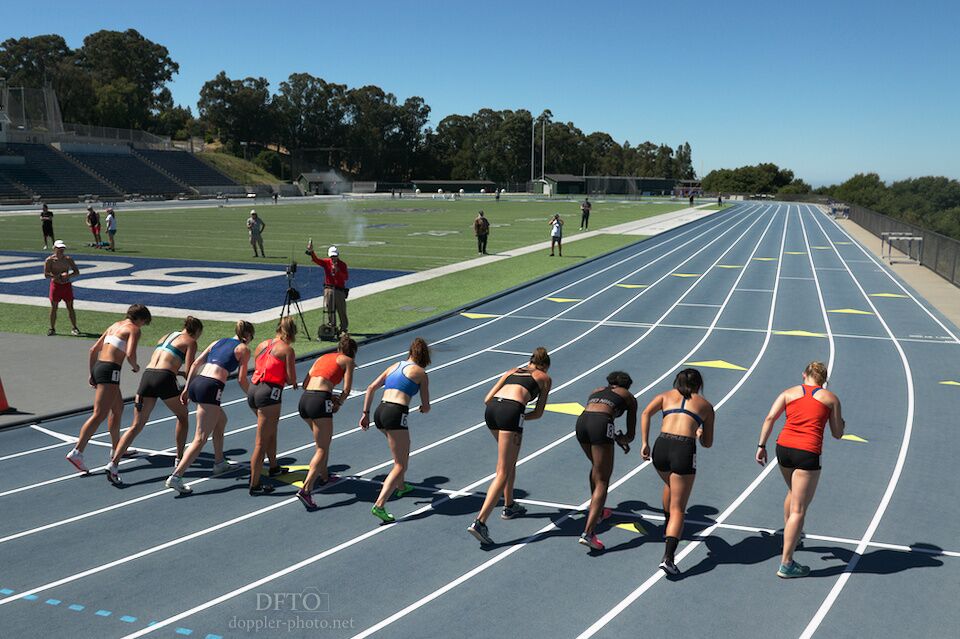
As Jordan calls a wrap on her first season competing for her country, and competing in decathlon, she has followed Andy to a new base in Texas. Both are mindful of the challenges that lie ahead. “Andy’s being just as ground-breaking as I am, a coach willing to train a female decathlete. He’s made me into the athlete I am. He too wants to see the women’s decathlon became a true Olympic event.”
“I want to go to the 2024 Olympics. And if they have the decathlon in 2028, I’ll be training for it.
And there’s one more goal. Austra Skujyte’s decathlon world record of 8358.
“I want to break the world record. I want to go over 8300. That would be just amazing.”
Jordan Gray. Dedicated. Determined. Decathlete.
You can follow the Grit Goddess’ mission on Instagram and Twitter
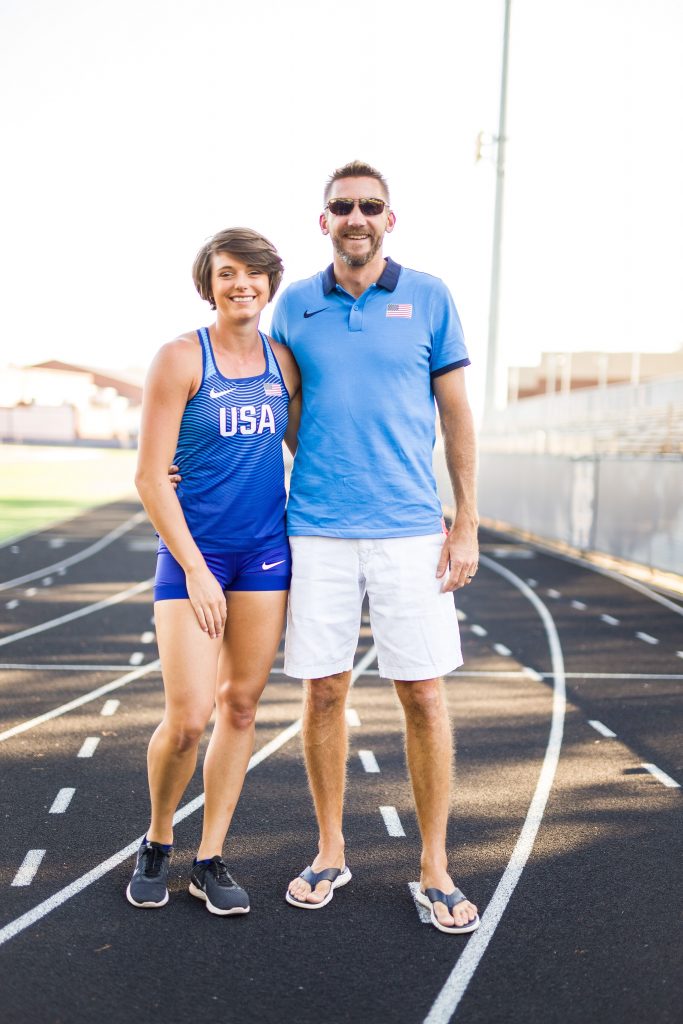
All photos of Jordan provided by Jordan. Photo of Cassandre Evans by Maud Clamar.
- *Women’s outdoor heptathlon: 100H, HJ, Shot, 200, LJ, Javelin, 800
- Men’s indoor heptathlon: 60m, LJ, Shot, HJ, 60H, PV, 1000m

